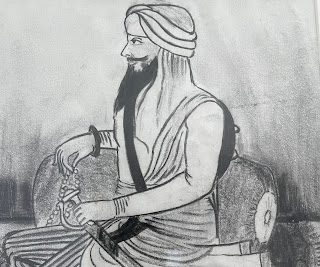Budh Singh Sukerchakia an affluent Bhatti Jat Jagirdar of Sukerchak in the Majha tract of the Punjab, was the first historically known ancestor of Maharaja Ranjit Singh. His original name was Desu Singh. He was born in 1670.’ He was son of Chaudhari Bharra who was jagirdar Of Sukerchak the Sukerchak was founded by his grandfather Chaudhari Aidhul in 1620 and he shift his headquarter Vein Poin to Sukerchak. According to a tradition, it is also said that Sukerchak was so named as it was founded on Friday (Shukarwar). Sukerchak was situated near Gujranwala, 70 kms, north of Lahore. It is said that in his early days Desu sometimes indulged in cattle-lifting. Once Desu carried off some good cattle from the village Narkhona. After a few days he met an old woman in the jungle. She enquired of Desu’s where abouts, She told him that Desu Singh had taken away her buffaloes and a pair of oxen and she was going to get them back. He told her that Desu Singh was a man of fierce nature and he would maltreat her. She said that when he knew her miserable condition he would take pity on her. She could not find Desu in the village but on return to her place she was surprised to find all her cattle tied up there safe and sound. One of his ancestors was initiated into Sikhism by Guru Gobind Singh in 1692. Budha Singh was a daring adventurer and is said to have taken part in the battles of Guru Gobind Singh and Banda Singh Bahadur. The success, which attended his exploits, won him the reputation of being one of the boldest and the most resolute of the Sikhs of the Punjab. He built a fortress-like mansion at his village. He was always held in high esteem by the Sikhs. He used to ride a piebald mare called after him as Desi which had crossed with its rider the rivers of Jhelum, Ravi and Chenab fifty times. It is said that sometimes Budha Singh covered on hismare’s back a distance of over one hundred miles a day.The brave and courageous Budha Singh,who was a giant in strength, is said to have received during his life time some forty sword cuts and nine matchlock wounds, without his physical strength failing him.”In the words of Carmichael Smyth, Budha Singh “was distinguished for the most intrepid courage; for his sagacity and shrewdness which bore him successfully through all his schemes, and for his ready wit and good humour. He was also famed for his regard to the rights and property of the poor. He was very kind and sympathetic to the fairs, the poor and the travelers, Budh Singh’s two sons were the name of Naudh Singh the other name Chanda Singh .Naudh Singh became the next ruler of Sukerchakia Misl and his younger brother Chanda Singh was become Chief of Raja Sansi Estate. He died of apoplexy in 1716.
References :-
- Khushwant Rai, Tawarikh-i-Sikhan (1811), MS., Ganda Singh collection, Patiala, p. 130; Sohan Lai Suri, Umdat-ut-Tawarikh, Daftar II, Lahore, -1885, p. 2; Ganesh Das, Char Bagh-i-Punjab (1855), Amritsar, 1965. p. 134; Gian Singh, Tawarikh Guru Khalsa, Part-11, reprint 1970, p. 277; Lepel Griffin, Ranjit Singh, Oxford, 1905, p. 153; Muhammad Latif, History of the Panjab, (1891), reprint, Delhi, 1964, p. 337. Some modern writers wrongly name him as Budh Singh.
- Some writers believe that Desu was the nickname given to Budha Singh after his mare called Desi (Muhammad Latif, op. tit, p, 337; Gian Singh, op. at., p. 227; Prem Singh Hoti, Maharaja Ranjit Singh, 3 rd ed. Amritsar, 1931, pp. 17-18).
- Carmichael Smyth, A History of the Reigning Family of Lahore (1847), Patiala reprint, 1970, p. 14.
- Hari Ram Gupta, History of the Sikhs, Vol. IV Delhi, 1982, p. 293.
- Kirpal Singh, ‘Maharaja Ranjit’s Birth place, Gujranwala, The Panjab Past and Present. Vol. XVI- II, October, 1980, p. 20.
- Carmichael Smyth, op. tit., p. 5.
- Gian Singh, op. tit., p. 277; Waheed-ud-Din, The Seal Ranjit Singh, reprint, Delhi, 1976, p. 56.
- Carmichael Smyth, op, tit., p. 4.
- Lepel Griffin, op. tit., p. 153; Muhammad Latif, op. tit., p. 337.
- Carmichael Smytb, op. tit., p. 5


